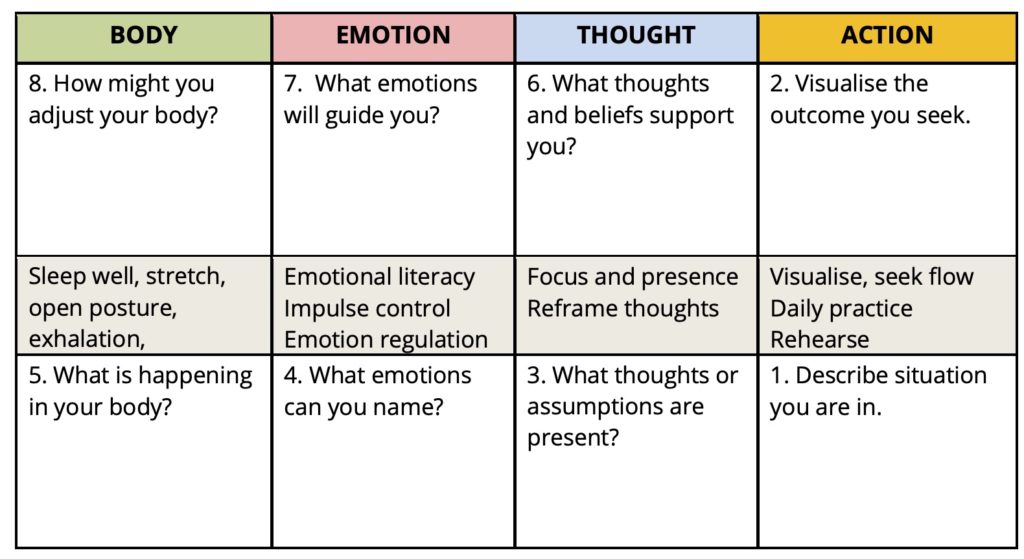
What is Resilient Mindset and How to Build It
A journey to flexible, resilient minds
A resilient mindset appears as a simple, compelling concept. If we could just acquire such a thing – perhaps with a pill or an app – life would magically become better. A resilient mindset could solve all sorts of problems.
For a critical mind, the concept is complex and confusing. Is there even such a thing? If there was such a thing, how might we develop and apply it?
In this article we try to understand and define what a resilient mindset might be and explore whether it is possible to develop such a thing.
What is a resilient mindset?
First, we must define a mindset. The catchy answer is to tease out Carol Dweck’s growth mindset. A fixed mindset takes the position that things cannot be changed – even with dedicated effort. For example: “There is no point in me trying to do mathematics. My mind is just not built for mathematics. I simply cannot solve these problems.” This built on Martin Seligman’s learned helplessness. Research demonstrates that it leads to a less fulfilling life.
The growth mindset, previously called learned optimism by Seligman, takes the position that if I apply myself, I can learn to master this. For example: “Mathematics is challenging for me and many others. If I apply myself and practice hard enough, with the right support, I can learn to solve these problems.” Research demonstrates that this belief leads to fulfilling and successful lives.
We cannot see these mindsets in a brain scan. They are beliefs about our abilities and the challenges presented to us. We could say that a mindset is a strongly held belief. There is evidence – primarily from twin studies – that some beliefs have as much as 50% genetic origin. Conservative views, pessimism, risk taking, and anxiety correlate with inheritance.
Nevertheless, we can become more aware of our beliefs and through this learn to challenge and adjust our beliefs. In this way cognitive behaviour therapy (CBT) can cure depression as well or better than anti-depressants. Likewise, a belief that ‘those people’ are evil and awful can change with constructive engagement to a belief that ‘those people’ are just like me.
In summary, a mindset is a mental representation of how things do or don’t work. Here are some mindset tests.
Which statement describes your mindset?
- People are selfish
- We should be self reliant
- Humans cause climate change
- High taxes are good
- I will take care of myself
- Empathy is a hardwired trait
- I believe I can master ‘x”
- Life is brutal, solitary, nasty and short
- People are kind and generous
- We should support people
- Climate change is random
- Tax should be minimised
- Others should care for me
- We can learn empathy
- There is no point trying ‘x’
- Life is a creative advance into novelty
Does one really want a mindset? Perhaps in this age of polarisation, what we need more are flexible perspectives. Rather than having set beliefs, we might learn to explore different perspectives thus testing the pros and cons of each. The BBC advocates a paradox mindset. There is no one right way and therefore, “mindset” may be misleading. We vote for flexible minds.
Second, we must define resilience. Is it a genetic attribute which is fixed at an early age? Alternatively, is it a learned set of skills that we can all acquire with effort and support. Some believe that it is ‘bouncing back’ from adversity. Others believe that adversity stimulates post traumatic growth.
While we must each come to our own definition, our research shows that the learned ability to bounce, grow, connect and find flow is an integrated set of skills. A skilful performer takes on increasingly difficult tasks. Adversity and failure are inevitable. They must learn to bounce forward fast. As they learn bounce, they grow physical, emotional and mental skills. These skills are connected in a team, game, or specific situation to achieve the flow state. Whilst super-productive and fulfilling, there will be setbacks.
Right here we face one of the conundrums of our time. Should we protect our children and people from adversity? Shall we make sure we are physically safe, emotionally coddled, and mentally complacent? In this mindset, adversity is the problem. People must be protected. Pressure and challenge must be avoided. We must support people at all costs and ask little of them.
Alternatively, should we challenge people with adversity and risk? Evidence shows that adversity stimulates awareness and growth. Further, serious adversities connect communities and increase collaboration. Rather than seeing people as vulnerable and victims, we view human ability as noble. We expect dedicated self-improvement and altruism.
Either one can become a fixed resilience mindset. These are the polarised perspectives of liberal humanism versus stoic self-reliance. Taken to extreme, both perspectives have risk. If we press the first, people can become frail (unwell), fearful (anxious) and fragile (depressed). If we press the second, people might feel isolated, exploited and distressed.
A flexible, resilient mind might ask when safety is the priority versus when challenge and accountability is a better solution. Pick your battles with wisdom and learn to adjust with new information.
How to build a flexible, resilient mind?
The bad news is that it takes time, effort and repetition. A pill or an app is not the solution. Hard work over thousands of hours defines the path. The good news is that we can learn and master well established, defined skills. There are even some bio-hacks (short cuts).
The goal of a flexible, resilient mind is:
“to construct a conscious, deliberate alignment of our physical, emotional, mental and spiritual resources to engage effectively with a defined situation”
Conscious and deliberate cognition is essential. Our thinking must be clear, ordered, flexible and creative. In approaching the situation, we must have a clear view of the complexity of the situation, master our own state, and be able to generate creative options to solve it.
The All Black rugby team has drilled this under the name of ‘red or blue, decide, do’. Articulated well by Ceri Evans, it is the discipline of engaging with a challenging moment knowing that we can choose between a ‘red’ emotionally reactive approach or a ‘blue’ thoughtful and deliberate approach. Players practice selecting the ‘blue’ by stepping back, up and in. They ‘step back’ to calm the ‘red’, then step up to get a clear view, and then step into the situation fully committed and deliberate.
In a challenging situation, the body will often react with fear (flight), anger (fight) or withdrawal (freeze) reactions. These strong negative emotions disable clear thinking and decisions. They can set the mind in stone.
The challenge is to restrain strong, negative reactions. To do this we have to name them, tame them and reframe them (step back and up). It is only when our emotional state is calm and positive that we can activate the mental skills required to assess, analyse and solve the challenge.
Our physical wellbeing is essential to support this effort. Good quality sleep, adequate rest and recovery, physical fitness and smart nutrition are required.
We can think of our spiritual resources as faith. Faith that with deliberate practice I/we can learn to master this situation (grow and flow). Faith that self-care is an ethical imperative (grow). Faith that people are fundamentally good (connect). Faith that flexible and creative work can solve the toughest challenges (bounce, grow, connect and flow). Faith that those who love and support us will be there regardless of the outcome (connect).
To apply this approach in your own life, think of a specific situation or challenge you are facing right now. Describe the situation clearly in writing. Reflect on the last time you confronted this situation. What were you thinking? What emotions were in play? What did you experience in your body?

As you describe how your mental, emotional and physical resources lined up to the situation, you can see with clarity how the situation evolved. This is called situational awareness and is the foundation of a resilient mind, emotions and body.
Next, define in writing what sort of outcome you would like to achieve in this situation. When you can define clearly the current versus desired outcome, you have created tension – a gap that you intend to close. This is the purpose of a flexible, resilient mind. We can apply willpower to close the gap.
Then, you must apply the creative solutions that help you close the gap. There are many variations that you might consider and explore. What new thinking might you introduce? What emotions will motivate and inspire action? What sort of physical wellbeing and engagement is required? This is called situational agility. This is the work of a resilient mind, emotions and body.
Once you can build a few potential solutions to the challenge, you are applying integral resilience and situational agility. It may not work on the first attempt. Be willing to test and trial these options with a colleague or a coach. The first time you apply it, it will feel awkward and may go astray. Sit down and reflect following the steps described. What do you need to be more aware of? What other options are available? How can you practice that particular part of the solution?
If you have made it this far, you are on the path to a resilient mindset – sorry – flexible, resilient mind. Well done.
Suggested Reading:
- Mindset: updated edition, Carol Dweck, 2017
- Learned Optimism, Martin Seligman, 2006
- The Coddling the American Mind, Lukianoff and Haidt, 2019
- Perform under Pressure, Ceri Evans, 2019
